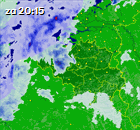Searching for CW-QSO's………. Occasionally as I scan the band looking for a CQ to answer, I may come across a ham sending their callsign two or more times, before they sign, "N1XYZ N1XYZ K". I believe it is safe to assume this ham has just finished sending a CQ, and often, if I like their callsign, I will listen a second, then go ahead and call them. Since I heard only their callsign and not the actual CQ, it is possible that this is not a CQ (maybe they were calling another ham instead). Listen a few seconds to ensure you are not interrupting a QSO, then assume that it was a CQ. I have found that sometimes if I wait for this suspected CQer to send another separate CQ, by that time they will have attracted a few more replies to their CQ, and I may lose out on what could have been a good contact. In the same regard, you may be in contact with another ham and end one of your transmissions by sending your own callsign two or more times (perhaps you repeat your call a few times because the other ham has copied it wrong). Then as a result, in the middle of your contact, you may be called by a third ham, who incorrectly assumes you have called CQ. Simply ignore the interrupting third ham. When answering a CQer you should zero beat the other ham's frequency, or set your transmit frequency as close to theirs as possible. Many hams today, in order to deal with the increasing QRM, make use of very narrow receive filters. The CQer may have their narrow filter turned on and not hear you answer if you are more than a few hundred cycles away from their transmit frequency. This is a quite common occurance on the CW ham bands, and points to the importance of correctly zero beating with your ham rig. By the same token, should you be calling CQ, do so with your narrow CW filter turned off, or you may well not hear several answering hams. Many hams are uncertain how to correctly zero beat their rigs on CW. If you are fortunate to have a newer transceiver that has dual VFOs, it can simplify your search for a CQ to answer. While scanning for a CQ, if you come across something interesting, such as someone tuning up (a potential CQer), a clear frequency (that you may wish to use later to call your own CQ), or an interesting QSO (that you might want to tailend when it finishes), then leave one of your VFOs on that spot. As you then continue scanning for a CQ, you can periodically, at the press of one button, switch to your second inactive VFO and see what's happening on your other interesting frequency. Having two VFOs built into your radio can greatly enhance the ease and convenience of your CW operation. Sometimes I wish my rig had three or four VFOs. HI. If your ham rig does not have dual VFOs, you can simply remember, or write down, any interesting frequencies you come across while scanning.
ASTROPOLIS demo Perseïden 12 aug 2025
- ASTROLAB Ieper
- BRAMS_Belgian Radio Meteor Stations
- BRAMS Oostende Astropolis viewer
- Meteor Radar Finland
- BIRA_Belgisch Instituut voor Ruimte-Aeronomie
- VHF beacon GRAVES RADAR
- SDR GRAVES meteor beacon 143.050 kHz
- SDR IEPER meteor beacom 49.990 kHz
- Werkgroep Meteoren
- Verkarende woordenlijst
- Chelyabinsk Meteor Hits Russia 2013_Youtube
- Spectrum Lab_Audio Spectrum Analyzer
Ham Radio Propagation
NAVTEX_Live
|
- DX CLUSTER - | |
| DXheat Cluster | DX Summit Cluster |
Metar_EBOS
I S S
Contactformulier
13 dec 2007
Abonneren op:
Reacties posten (Atom)
WWW.ON8CL.BE




0 reacties:
Een reactie posten